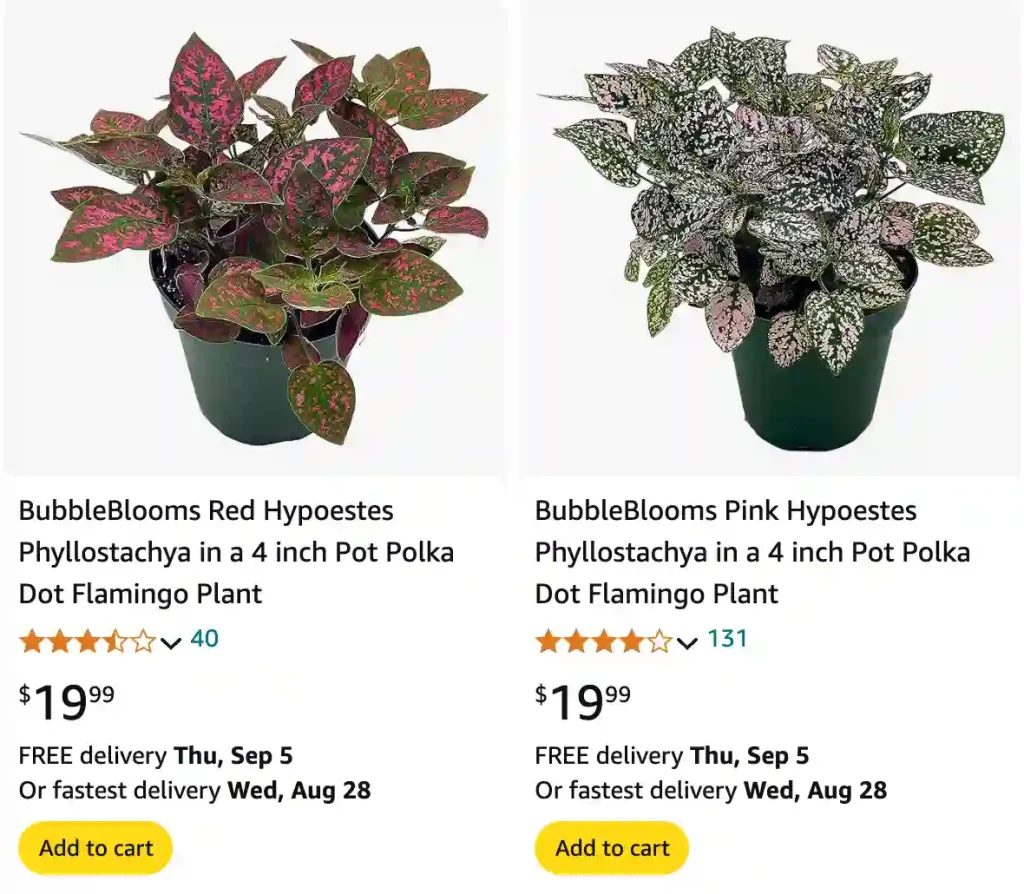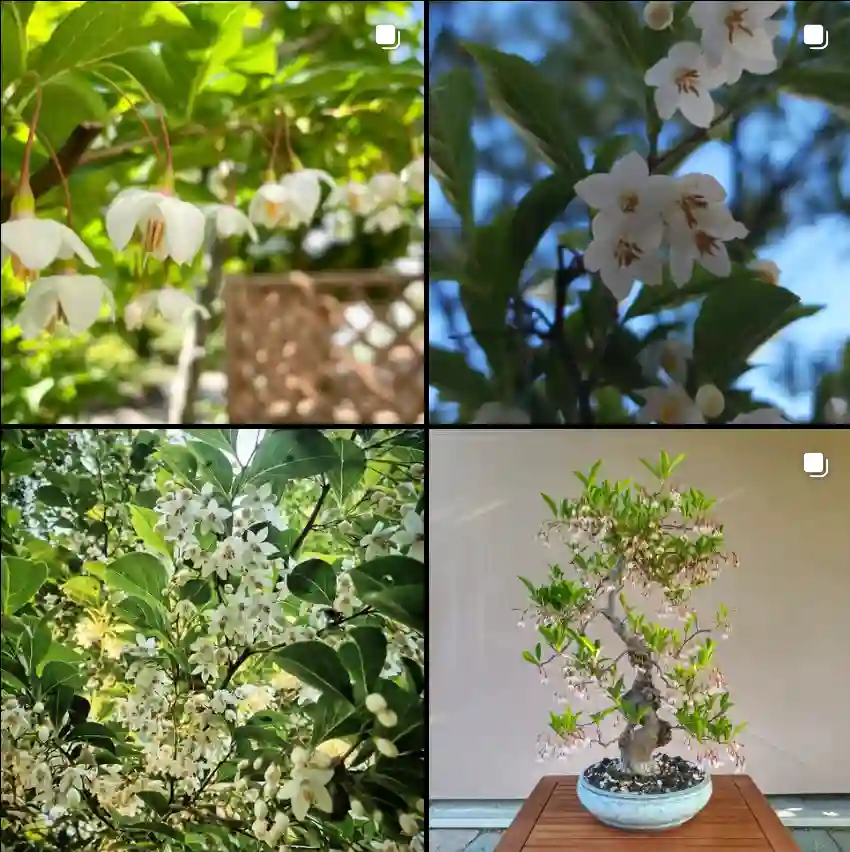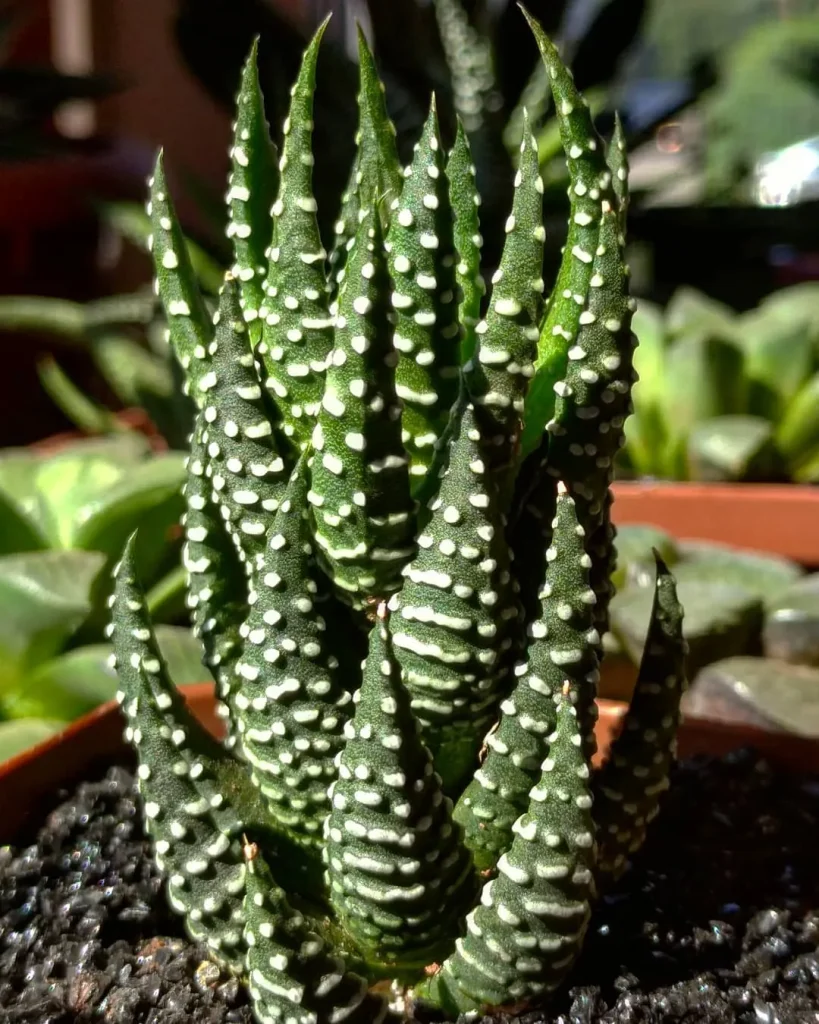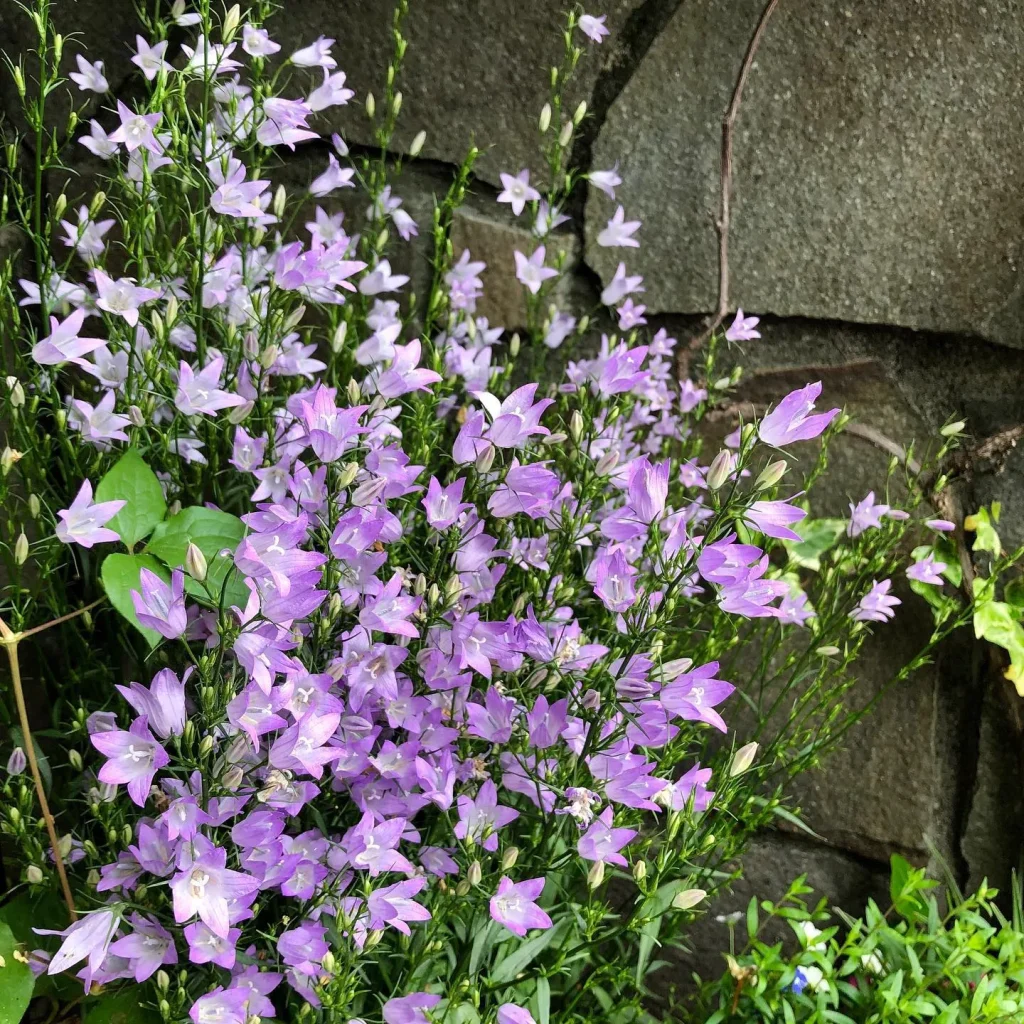
FAQs About the Polka Dot Plant
The Polka Dot Plant, scientifically known as Hypoestes Phyllostachya, is a popular choice for indoor gardening due to its colorful, spotted foliage. If you’re new to growing this charming plant or considering adding one to your collection, you might have some questions. Here’s a comprehensive guide to help you navigate the most frequently asked questions about Polka Dot Plants.
138 Species in Genus Hypoestes
How to Propagate Polka Dot Plant?
Propagating a Polka Dot Plant is quite straightforward and can be done in a few simple steps. The most common method is through stem cuttings:
- Select Healthy Cuttings: Choose a healthy stem from the plant, preferably one that is about 4-6 inches long and has at least 2-3 leaves.
- Prepare the Cutting: Using a clean, sharp knife or scissors, cut just below a leaf node.
- Remove Lower Leaves: Strip off the lower leaves, leaving a few leaves at the tip.
- Rooting Medium: Place the cutting in a glass of water or a pot with moist potting soil. If using water, change it every few days to prevent stagnation.
- Provide Warmth and Light: Place the cutting in a warm, bright location but away from direct sunlight. It should start developing roots in a few weeks.
- Potting: Once roots are well-established, transplant the cutting into a pot with well-draining soil.
How to Care for Polka Dot Plant?
Caring for Polka Dot Plants involves a few key practices to keep them healthy and vibrant:
- Light: Polka Dot Plants thrive in bright, indirect light. Too much direct sunlight can scorch the leaves, while too little light may cause the plant to become leggy.
- Watering: Keep the soil consistently moist but not soggy. Allow the top inch of soil to dry out before watering again.
- Temperature: These plants prefer temperatures between 60-75°F (15-24°C). Avoid exposing them to cold drafts or sudden temperature changes.
- Fertilizing: Feed your Polka Dot Plant with a balanced liquid fertilizer every 4-6 weeks during the growing season (spring and summer).
How Big Do Polka Dot Plants Get?
Polka Dot Plants are compact, typically growing to about 12-18 inches in height and width. They’re well-suited for small pots or containers, making them an excellent choice for desktops, shelves, or windowsills.
How Often to Water Polka Dot Plant?
Watering frequency depends on the plant’s environment. Generally, you should water when the top inch of soil feels dry to the touch. In warmer months, this might mean watering every 1-2 weeks, while in cooler months, you might need to water less frequently.
How to Prune Polka Dot Plant?
Pruning helps maintain the plant’s shape and encourages bushier growth. Here’s how to do it:
- Choose Pruning Time: The best time to prune is in spring or early summer when the plant is actively growing.
- Trim the Tips: Use clean, sharp scissors to trim back the tips of the stems. This will encourage the plant to branch out and become bushier.
- Remove Dead or Leggy Growth: Trim any dead or leggy stems to improve the plant’s overall appearance.
Do Polka Dot Plants Flower?
Polka Dot Plants can produce small, inconspicuous flowers, typically in shades of purple or pink. However, they are primarily grown for their decorative foliage rather than their flowers.
Are Polka Dot Plants Toxic to Cats?
No, Polka Dot Plants are not considered toxic to cats. They are generally safe for pets, though it’s always a good idea to prevent pets from chewing on plants, as it can sometimes cause mild digestive upset.
Are Polka Dot Plants Toxic to Dogs?
Similar to cats, Polka Dot Plants are not toxic to dogs. They are safe for households with canine companions, but, as with any plant, it’s best to keep them out of reach to avoid potential chewing.
Can Polka Dot Plant Grow in Water?
Yes, Polka Dot Plants can grow in water. This method is often used for propagation. To grow a Polka Dot Plant in water, simply place the cuttings in a container of water and change the water regularly. Once roots are well-established, you can either keep the plant in water or transplant it to soil.
Do Polka Dot Plants Like Humidity?
Polka Dot Plants do appreciate humidity. While they can tolerate average indoor humidity levels, they will thrive with higher humidity. If your home is dry, especially in winter, consider using a humidity tray or a room humidifier to maintain optimal conditions.
What to Plant With Polka Dot Plants?
Polka Dot Plants pair well with other low-light, tropical plants. Consider planting them alongside Pothos, Philodendrons, or Calatheas. These companion plants have similar care requirements, making them ideal for creating a lush, diverse indoor garden.
Benefits and Common Problems
Benefits:
- Decorative Appeal: The vibrant, spotted leaves add a pop of color and interest to any space.
- Easy Care: With proper light and watering, Polka Dot Plants are relatively low-maintenance.
Common Problems:
- Leggy Growth: Can result from insufficient light. Prune regularly and provide adequate light to maintain bushiness.
- Pests: Watch out for common houseplant pests like spider mites or aphids. Regularly check the undersides of leaves and treat infestations promptly.
By understanding these FAQs, you’ll be well-equipped to care for your Polka Dot Plant and keep it thriving in your indoor garden.
If i die, water my plants!



